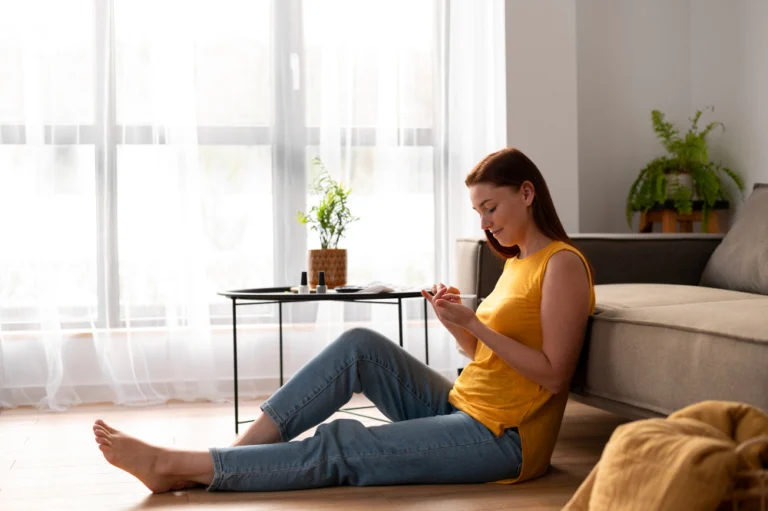
Is your smartphone the first thing you reach for in the morning and the last thing you see at night? You’re not alone. For many of us, our devices have become extensions of ourselves, but a growing body of research suggests this constant connection comes at a cost. If you’ve ever felt a phantom buzz in your pocket, a spike of anxiety when your battery hits 5%, or wondered if you could even last 24 hours without your phone, this article is for you. We’re diving deep into the latest research to uncover what recent surveys say about smartphone addiction trends, moving beyond the headlines to offer a clear picture of our collective digital habits.
This post will explore the startling statistics behind our screen time, unpack the significant differences in smartphone use across generations, and examine the profound impact this is having on our mental health and productivity. More importantly, we’ll provide actionable strategies and fresh perspectives to help you cultivate a healthier relationship with your technology.

The State of Our Screens: A Look at the Alarming Numbers
The data is in, and it paints a vivid picture of a world increasingly mediated by screens. Recent surveys reveal that smartphone usage isn’t just common; it’s becoming all-consuming.
According to a 2025 report from Harmony Healthcare IT, the average American now spends a staggering 5 hours and 16 minutes per day on their phone.
This represents a significant 14% increase from the 4 hours and 37 minutes reported in 2024, showcasing a clear upward trend in our digital consumption.
But what does this screen time actually look like? For many, it’s a constant cycle of checking. A study cited by Exploding Topics found that the average person checks their smartphone 144 times a day—that’s roughly once every 7 minutes of our waking hours.
This compulsive behavior is leading a growing number of people to self-identify as addicts. Data from Reviews.org and https://www.google.com/search?q=AddictionHelp.com indicates that a majority of Americans, around 57%, now admit to feeling addicted to their phones.
This sense of dependency is so strong that 76% report feeling nervous when separated from their device, a phenomenon now widely recognized as “nomophobia” (no-mobile-phone-phobia).
The reasons for this deep-seated attachment are multifaceted, often boiling down to a few key psychological triggers. Surveys point to entertainment, boredom, distraction, and habit as the primary drivers. Every notification, like, and message delivers a small hit of dopamine, the brain’s pleasure chemical.
Over time, this creates a powerful reward loop, compelling us to pick up our phones even when there’s no conscious reason to do so. It’s a digital treadmill, and the latest trends show we’re running faster than ever.
A Generational Divide: How Gen Z, Millennials, and Boomers Use Phones Differently
When it comes to smartphone addiction trends, one of the most fascinating narratives is the stark contrast between different age groups. While smartphone dependency affects all demographics, the intensity, usage patterns, and self-awareness vary dramatically from Gen Z to Baby Boomers.
Gen Z: The Digital Natives
Born into a world of high-speed internet and pocket-sized supercomputers, Gen Z’s relationship with smartphones is deeply ingrained. They are the undisputed champions of screen time, with recent data from Harmony Healthcare IT clocking their average daily phone usage at a jaw-dropping 6 hours and 27 minutes.
A staggering 83% of Gen Z acknowledge they have an unhealthy relationship with their phones, according to a 2024 BePresent report. This generation uses their devices primarily for entertainment (73%) and social media (61%), creating a constant stream of content that can be both connecting and overwhelming.
The result? Heightened anxiety, with 66% of teens reporting they feel anxious without their phones and an equal number admitting to losing sleep over late-night scrolling.
Millennials: The Digital Adapters
Millennials, who witnessed the transition from analog to digital, are not far behind. They average around 5 hours and 28 minutes of screen time daily.
Having integrated smartphones into every facet of their lives—from work and social networking to parenting and finance—their dependency is firmly established. Around 48% of millennials feel they are addicted.
They are often caught in a balancing act, using their phones as essential tools for productivity while simultaneously falling prey to the endless distractions they offer.
Gen X and Baby Boomers: The Utilitarian Users
Gen X and Baby Boomers, while still heavy users, display more utilitarian habits. Gen X averages around 4 hours and 48 minutes, while Boomers spend just over 4 hours on their devices.
Their usage often revolves around more practical applications like news, weather, and keeping in touch with family through calls and texts rather than immersive social media experiences.
However, addiction is not exclusive to the young. A surprising 56% of Boomers admit they use their phones more than they would like, though only about 29% would label themselves as “addicted.”
Interestingly, while younger generations are more likely to feel addicted, they are also more proactive in seeking a solution, with 41% of Gen Z actively trying to reduce screen time compared to 31% of Boomers.
The Mental Toll: The Unseen Impact of Hyper-Connectivity
The conversation around smartphone addiction trends is shifting from mere time-wasting to a serious discussion about mental and psychological well-being. The constant connectivity, designed to bring us closer, is paradoxically linked to rising rates of anxiety, depression, and loneliness.
A key contributor is the fear of missing out (FOMO). The curated, highlight-reel nature of social media creates a fertile ground for social comparison, where our own lives can feel inadequate in comparison to the seemingly perfect lives of others. This constant exposure can erode self-esteem and trigger feelings of anxiety and depression.
Studies have shown a direct correlation between high social media usage and poorer mental health outcomes, particularly in adolescents.
Furthermore, our phones are fundamentally altering our brain chemistry. As mentioned, each notification acts as a micro-reward, releasing dopamine and training our brains to seek more of these digital stimuli. This can lead to a state of continuous partial attention, where we are never fully present in our physical environment.
Our ability to focus deeply on a single task is diminished, replaced by a constant, low-level hum of digital distraction. This cognitive cost extends to our personal relationships, where being “phubbed” (phone snubbed) by a partner or friend has become a common and hurtful experience.
Perhaps one of the most significant impacts is on our sleep. The blue light emitted from screens suppresses the production of melatonin, the hormone1 that regulates our sleep-wake cycle. Late-night scrolling tricks our brain into thinking it’s still daytime, making it harder to fall asleep and reducing the quality of the rest we do get.
A study cited by Mastermind Behavior Services found that 67% of teenagers have lost sleep due to their phone use, a statistic that has profound implications for their development, academic performance, and overall mood.
Productivity in Peril: How Smartphone Addiction Trends Affect the Workplace
The battle for attention has officially entered the workplace, and smartphones are the primary culprits in derailing focus and productivity.
While these devices can be powerful tools for work-related communication and tasks, their potential for distraction is immense. The lines between personal and professional life have blurred, and the cost to businesses is becoming increasingly apparent.
Recent surveys reveal the extent of the problem. On average, employees estimate they spend around 3 hours per day on their personal phones during work hours. A CareerBuilder survey found that employers identified cell phones and texting as the single biggest productivity killer in the workplace, cited by 49% of respondents.
The cost of these interruptions is not trivial. Research from the University of California, Irvine, famously found that it takes an average of 23 minutes to regain full focus after a single distraction. When you consider the average user checks their phone 144 times a day, the cumulative loss of productive time is staggering.
This constant task-switching has a cognitive consequence known as “attention residue.” When we switch from a task to check our phone and then back again, a part of our cognitive function remains stuck on the previous activity.
This makes it harder to engage in “deep work”—the kind of focused, uninterrupted concentration required for complex problem-solving and creativity.
The result is a workforce that is often busy but less effective, operating in a state of frazzled reactivity rather than proactive engagement. Recognizing this, some companies are experimenting with policies to curb phone use, from designated “phone-free” zones to formal smartphone bans, in an effort to reclaim lost focus and boost output.
Reclaiming Your Attention: Practical Steps Towards Digital Wellness
Acknowledging the problem is the first step, but reclaiming your time and attention requires a conscious and strategic effort. The goal isn’t to abandon technology altogether but to shift from a compulsive, reactive relationship to an intentional and mindful one. This is the core of the growing digital wellness movement.
Here is a practical framework you can use to build a healthier relationship with your smartphone:
The A.C.T. Framework
- A – Awareness: Conduct a Digital Audit
- Action: For one week, use your phone’s built-in screen time tracker (or a third-party app) to gather data. Don’t change your habits yet; just observe.
- Key Metrics to Note: Total screen time, most-used apps, number of pickups, and time of day you’re most active.
- Goal: To get an objective, non-judgmental baseline of your current usage. You can’t change what you don’t measure.
- C – Curation: Design Your Digital Environment
- Action: Based on your audit, ruthlessly curate your digital space.
- Notifications: Turn off all non-essential notifications. Only allow them from apps where timeliness is critical (e.g., calendar, messaging from key people).
- Home Screen: Move distracting apps (social media, news) off your primary home screen. Place them in a folder on the second or third page. This adds a moment of friction, forcing you to consciously seek them out.
- Go Grayscale: Switching your phone’s display to grayscale makes it significantly less appealing and can dramatically reduce mindless scrolling.
- Action: Based on your audit, ruthlessly curate your digital space.
- T – Time-Blocking: Create Intentional Boundaries
- Action: Set clear rules for when and where you use your phone.
- “Phone-Free” Zones & Times: Designate specific times (e.g., the first hour of the day, during meals) and physical spaces (e.g., the bedroom) as phone-free.
- App Time Limits: Use your phone’s settings to set daily time limits for your most problematic apps. When the time is up, it’s up.
- Batch Your Checking: Instead of checking your phone sporadically, schedule 2-3 specific times per day to check emails and social media. This puts you in control.
- Action: Set clear rules for when and where you use your phone.
By implementing this framework, you transform your smartphone from a demanding master into a useful servant, ensuring it adds value to your life without detracting from it.
Conclusion: Your Digital Future is in Your Hands
The latest surveys on smartphone addiction trends send a clear message: our devices are taking up more of our time, attention, and mental energy than ever before. From Gen Z’s near-total immersion to the productivity losses felt in workplaces everywhere, the consequences of unchecked usage are significant and widespread.
However, the future is not dystopian. The growing awareness of these trends is fueling a powerful counter-movement toward digital wellness. We are at a crucial inflection point where we can choose to be passive consumers of technology or intentional architects of our digital lives.
By understanding the forces at play and taking deliberate steps to set boundaries, curate our digital environments, and reclaim our focus, we can harness the power of our devices without becoming enslaved by them.
The ultimate call-to-action is personal. Take a moment to look at your own habits. Is your phone serving your goals or distracting you from them? Start with one small change today—turn off a notification, move an app, or leave your phone in another room for an hour. The path to a healthier digital life begins with a single, intentional act.
Frequently Asked Questions
What do recent surveys say about the main cause of smartphone addiction?
Recent surveys point to a combination of factors. The primary drivers identified are psychological and neurological. Entertainment (cited by 70% of users), boredom (54%), and habit (41%) are the most common reasons people use their phones excessively.
On a neurological level, the dopamine reward system plays a crucial role. Apps, particularly social media, are designed to provide intermittent variable rewards (likes, comments, notifications), which creates a compulsive loop that is difficult to break, leading to addictive behaviors.
Are there any positive smartphone addiction trends, like people trying to reduce usage?
Yes, a significant and positive trend is the rise of digital wellness and increased self-awareness. Data shows that while addiction rates are high, so is the desire to change. For example, 41% of Gen Z and 31% of Baby Boomers report actively trying to reduce their screen time.
Furthermore, 80% of those who admit to having a cellphone addiction wish they were less reliant on their phones. This growing awareness is driving the adoption of tools and strategies like screen time limits, notification management, and apps designed to promote mindful phone use.
How do smartphone addiction trends impact sleep quality?
The impact is substantial and well-documented in recent studies. The blue light from smartphone screens suppresses melatonin, the hormone that signals to your body that it’s time to sleep. This disruption of the natural sleep-wake cycle makes it harder to fall asleep and reduces deep, restorative sleep.
Surveys confirm this, with a staggering 67% of teenagers and 50% of adults reporting they have lost sleep due to their phone use. This has downstream effects on mood, cognitive function, and overall health.




